Michigan chestnut crop report for the week of June 1, 2023
Most growers using granular fertilizers are planning to apply them soon if they have not already.
Weekly weather review
It’s been hot and dry.
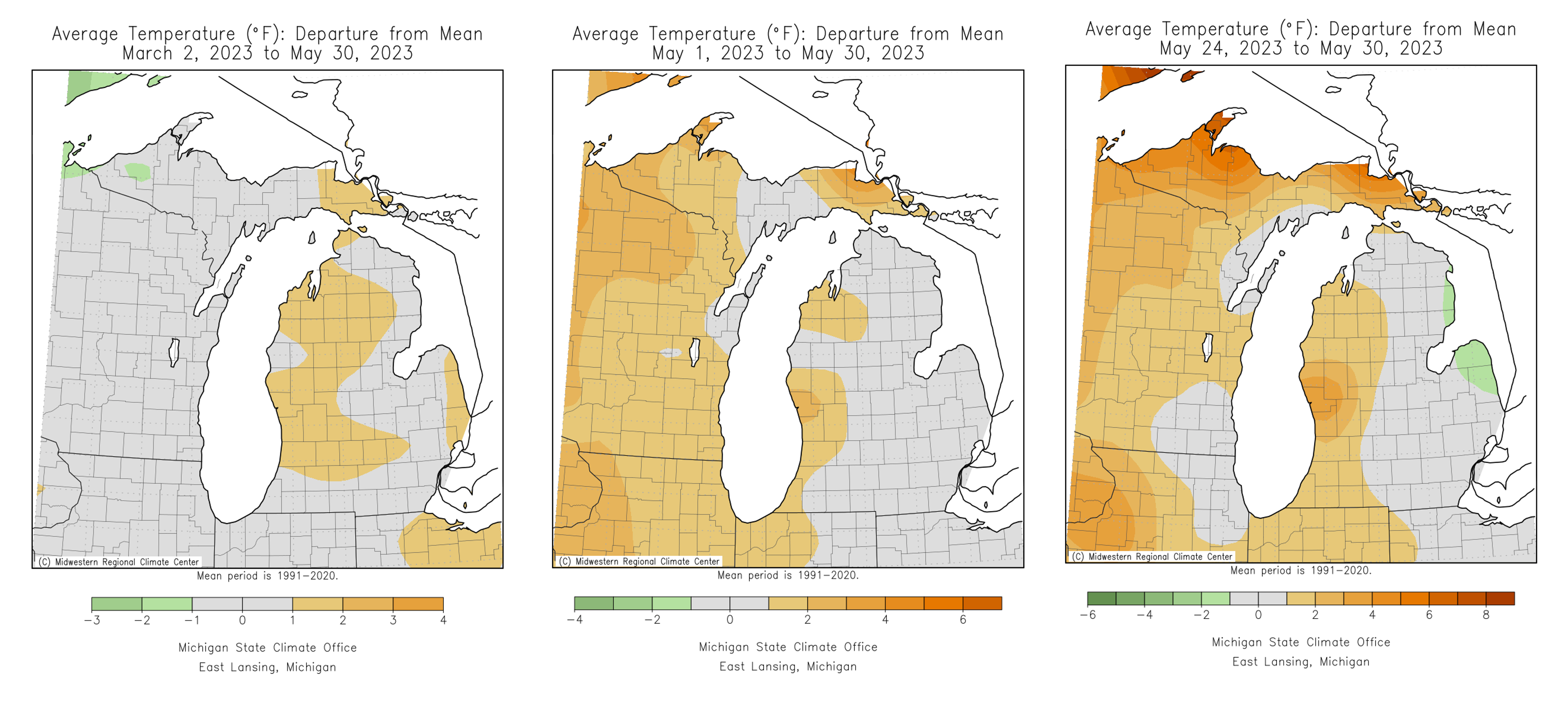
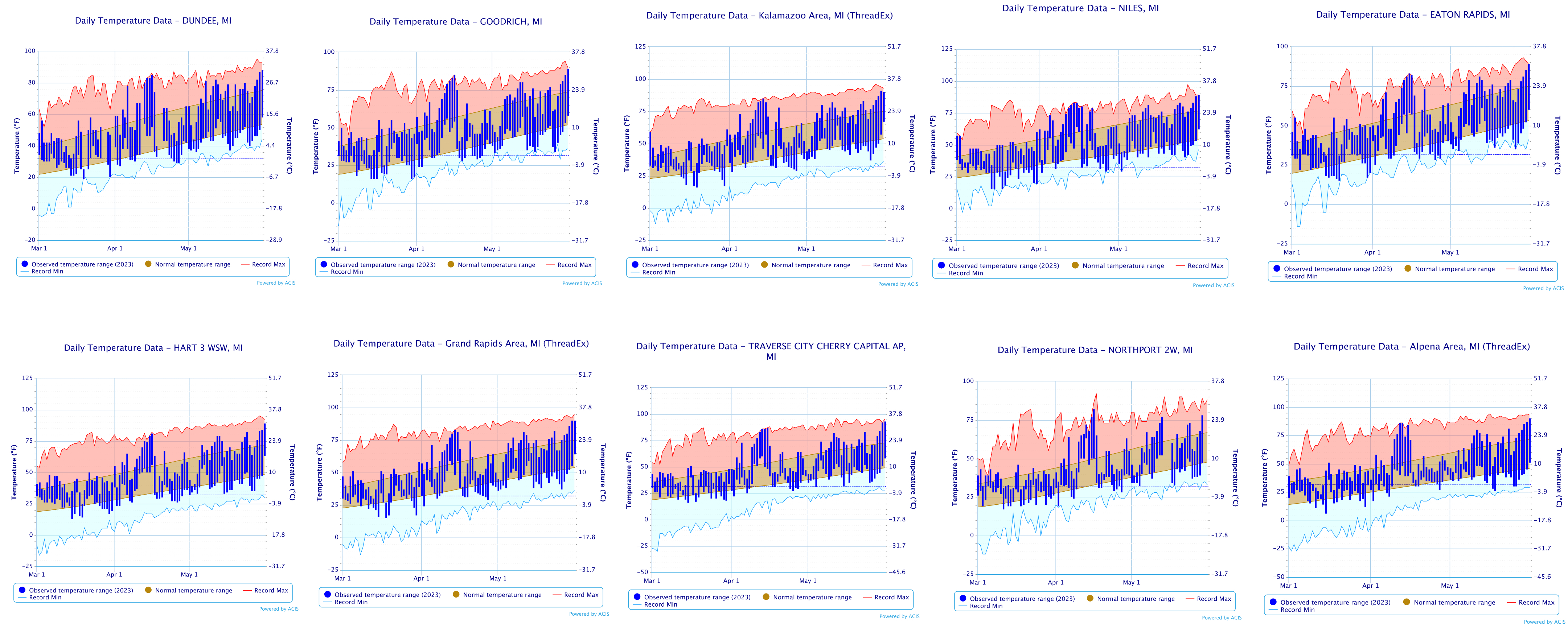
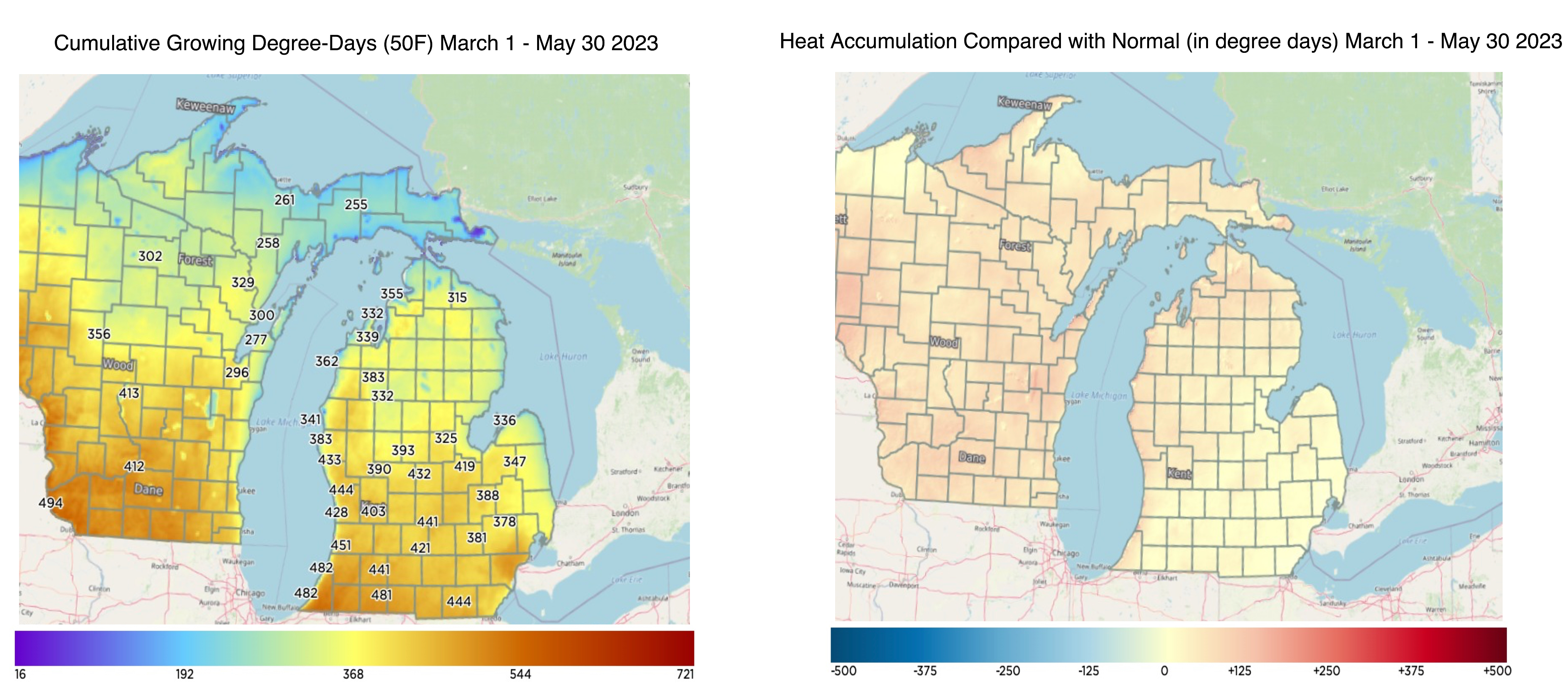
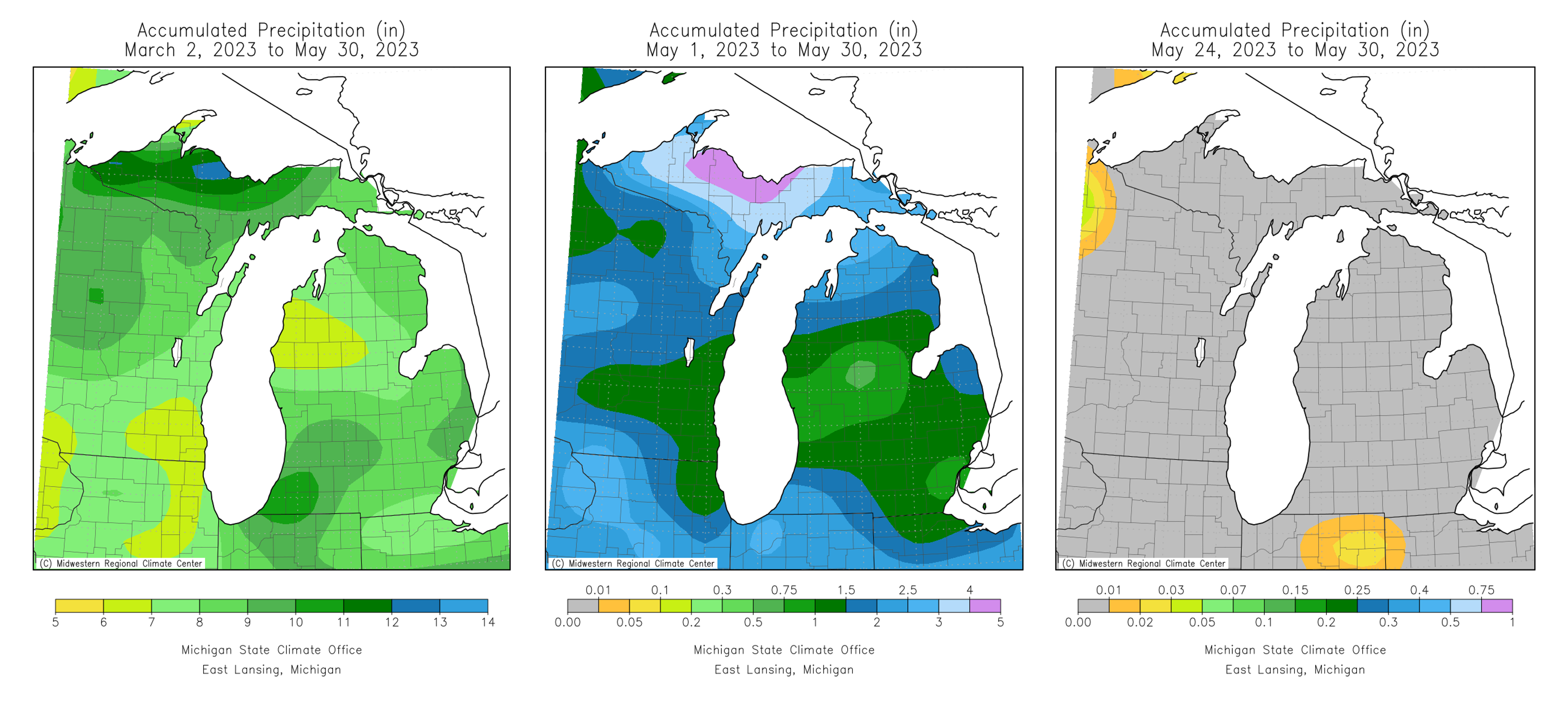
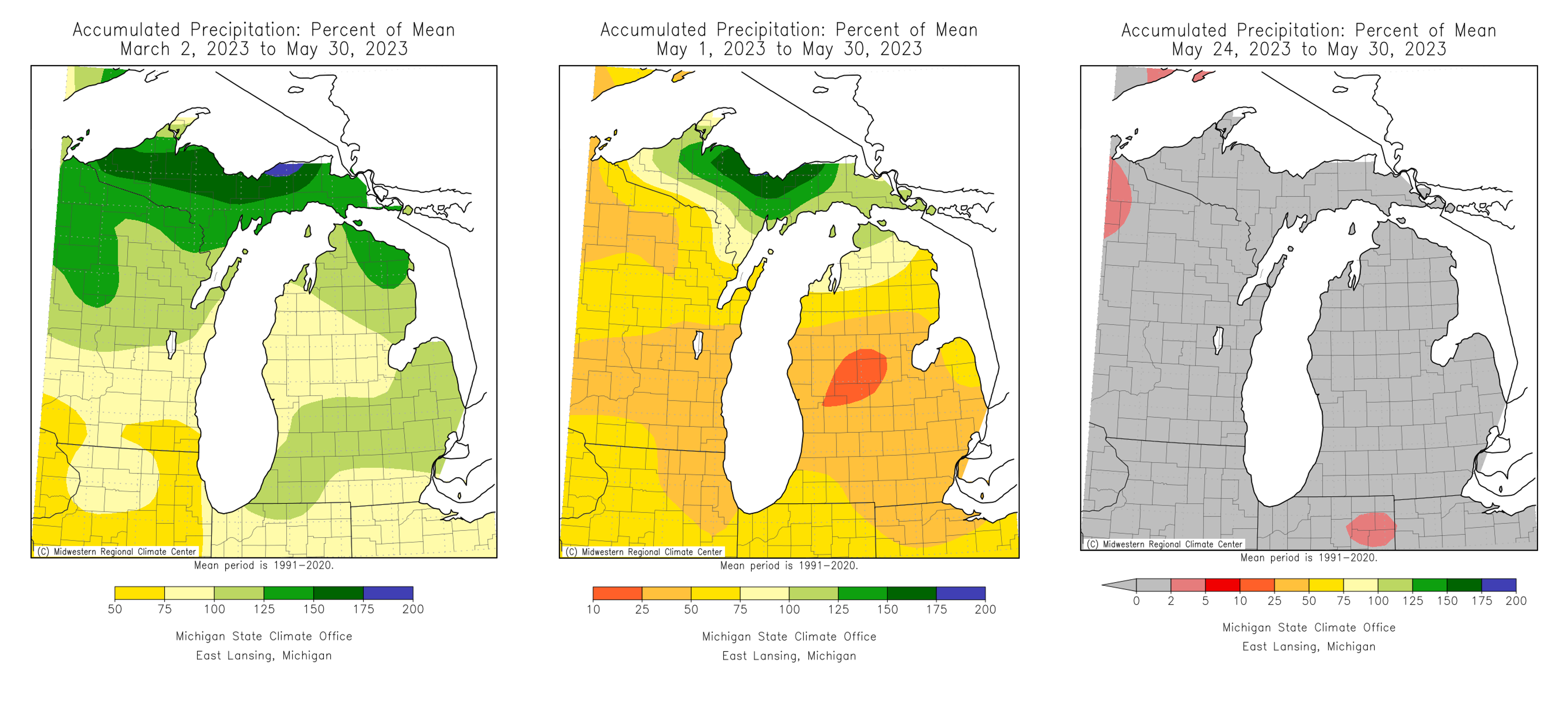
As a result of our recent warm and dry weather, parts of central and southern Michigan are abnormally dry and on the verge of a moderate drought.
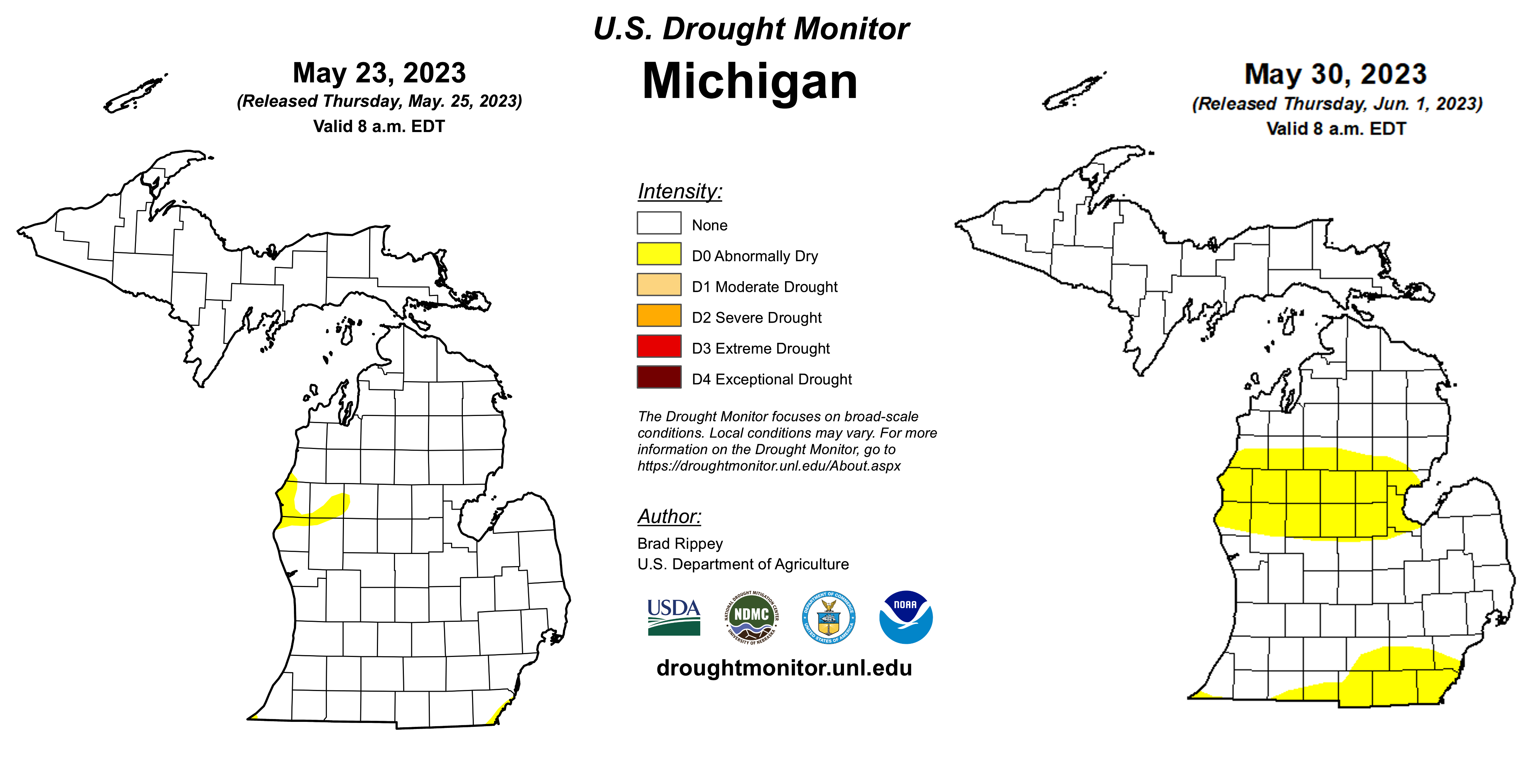
Looking ahead
It will be mostly fair, warm and dry through this weekend. High temperatures will be in the upper 80s-low 90s through Saturday, June 3, but cooler near the lakeshore. Low temperatures will be in the 50s-60s. There will be high water demand for the next several days with abnormally high potential evapotranspiration (PET) rates. We will have somewhat cooler temperatures by the middle of the week with highs falling back to the 70-80s and lows into the 50s.
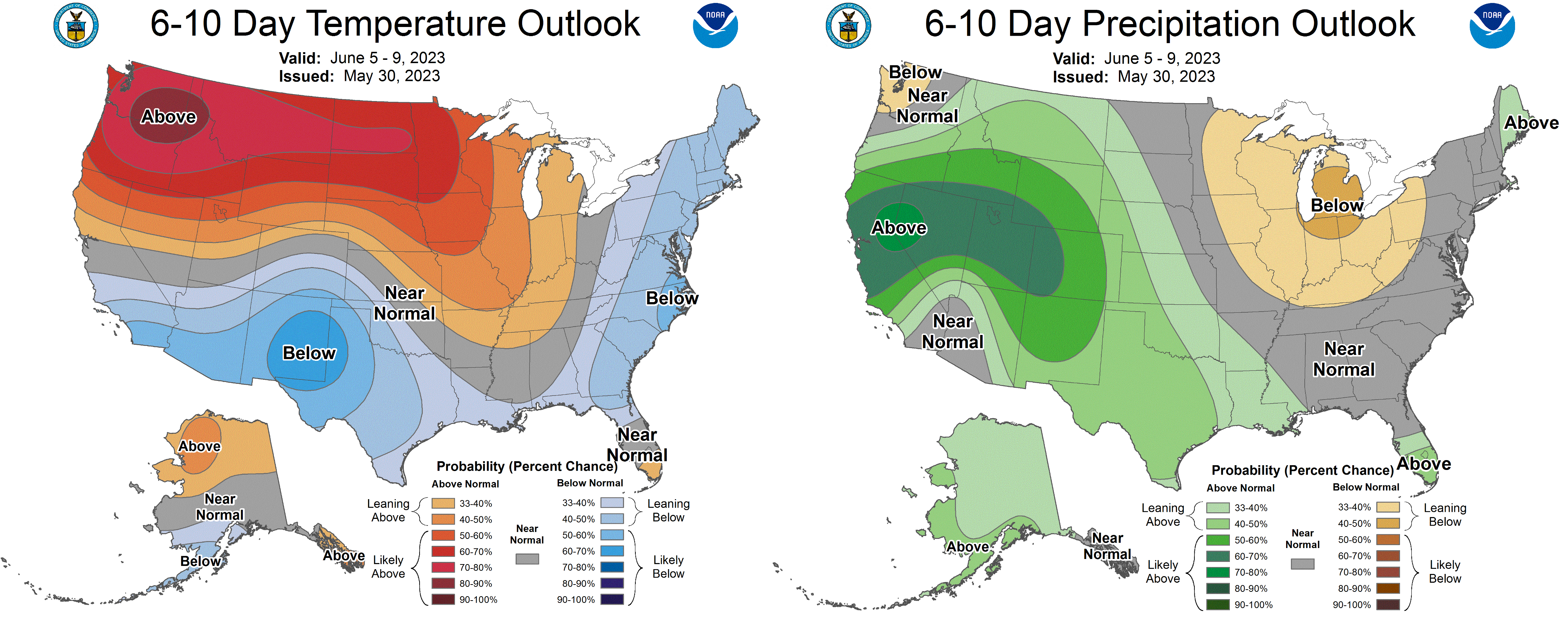
View the most recent MSU agriculture weather forecast.
Management activities
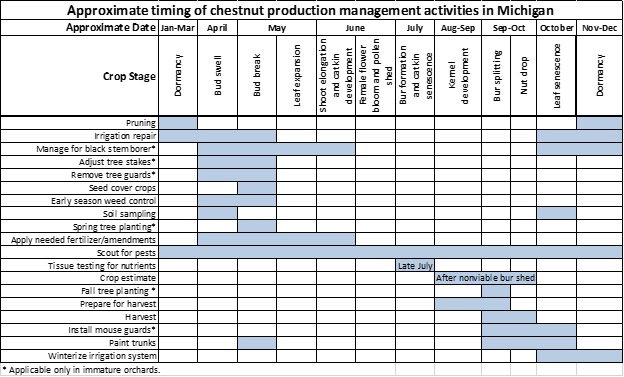
Fertility
Most growers using granular fertilizers are planning to apply them soon. As a reminder, for nutrient management considerations, please reference the 2023 Michigan Chestnut Management Guide from Michigan State University Extension (MSU Extension) or the Nutrient Management section of the MSU Extension Chestnut website. To receive nutrient management recommendations from MSU, pick up a commercial soil test at your local MSU Extension office.
In recent years, some growers have also been utilizing tissue nutrient testing as another data point for making nutrient adjustments. Sampling chestnut leaf tissue for analysis is similar to protocol in other crops, with a few important caveats.
Collect samples from this year’s new growth before vegetative terminal growth stops for the year. Terminal growth typically stops in early August as the trees start developing burs.
Collect five to 10 leaves per tree from multiple terminal branches. Sample along the length of the new growth.
Carefully read the protocol from the testing facility you plan to utilize to ensure you receive a valid report.
There are many labs that provide leaf analysis testing, a few are listed here for your convenience:
A & L Great Lakes Laboratories in Fort Wayne, Indiana (phone: 260-483-4759)
Brookside Labs in New Knoxville, Ohio (phone: 419-753-2448)
For more information on the general protocol for nutrient sampling, refer to the MSU Extension article, “Time to collect leaf samples for nutrient analysis.”
For pest information, see the June 1 Chestnut Pest Report
Stay connected
For more information on chestnut production, visit www.chestnuts.msu.edu, sign up to receive our newsletter and join us for the free 2023 MSU Chestnut Growers Chat Series.
If you are unsure of what is causing symptoms in the field, you can submit a sample to MSU Plant & Pest Diagnostics. Visit the webpage for specific information about how to collect, package, ship and image plant samples for diagnosis. If you have any doubt about what or how to collect a good sample, please contact the lab at 517-432-0988 or pestid@msu.edu.
Become a licensed pesticide applicator
All growers utilizing pesticide can benefit from getting their license, even if not legally required. Understanding pesticides and the associated regulations can help growers protect themselves, others, and the environment. Michigan pesticide applicator licenses are administered by the Michigan Department of Agriculture and Rural Development. You can read all about the process by visiting the Pesticide FAQ webpage. Michigan State University offers a number of resources to assist people pursuing their license, including an online study/continuing educational course and study manuals.
This work is supported by the Crop Protection and Pest Management Program [grant no 2021-70006-35450] from the USDA National Institute of Food and Agriculture. Any opinions, findings, conclusions, or recommendations expressed in this publication are those of the author(s) and do not necessarily reflect the view of the U.S. Department of Agriculture.



 Print
Print Email
Email